Michael Chabons America
Contemporary American Literature
Series Editor: Bob Batchelor
Gatsby: The Cultural History of the Great American Novel, by Bob Batchelor, 2013.
Michael Chabons America: Magical Words, Secret Worlds, and Sacred Spaces, edited by Jesse Kavadlo and Bob Batchelor, 2014.
Magical Words, Secret Worlds, and
Sacred Spaces
Edited by
Jesse Kavadlo
Bob Batchelor
ROWMAN & LITTLEFIELD
Lanham Boulder New York Toronto Plymouth, UK
Published by Rowman & Littlefield
4501 Forbes Boulevard, Suite 200, Lanham, Maryland 20706
www.rowman.com
10 Thornbury Road, Plymouth PL6 7PP, United Kingdom
Copyright 2014 by Rowman & Littlefield
All rights reserved. No part of this book may be reproduced in any form or by any electronic or mechanical means, including information storage and retrieval systems, without written permission from the publisher, except by a reviewer who may quote passages in a review.
British Library Cataloguing in Publication Information Available
Library of Congress Cataloging-in-Publication Data
Michael Chabons America : Magical Words, Secret Worlds, and Sacred Spaces / edited by Jesse Kavadlo, Bob Batchelor.
pages cm. (Contemporary American Literature)
Includes bibliographical references and index.
ISBN 978-1-4422-3604-2 (cloth : alk. paper) ISBN 978-1-4422-3605-9 (ebook)
1. Chabon, MichaelCriticism and interpretation. I. Kavadlo, Jesse, 1971 editor of compilation. II. Batchelor, Bob, editor of compilation.
PS3553.H15Z75 2014
813'.54dc23
2014006025
 TM The paper used in this publication meets the minimum requirements of American National Standard for Information Sciences Permanence of Paper for Printed Library Materials, ANSI/NISO Z39.48-1992.
TM The paper used in this publication meets the minimum requirements of American National Standard for Information Sciences Permanence of Paper for Printed Library Materials, ANSI/NISO Z39.48-1992.
Printed in the United States of America
Acknowledgments
I would like to thank all my friends and colleagues in Maryville Universitys English Department: Bebe Nickolai, Leah Schwartz, Germaine Murray, John Marino, and especially Johannes Wich-Schwarz, who always wants to listen; arts and sciences deans Candace Chambers and Dan Sparling; the always wonderful Mary Ellen Finch; and the students who read and discussed The Amazing Adventures of Kavalier & Clay with me, once they got over the shock of being assigned a six-hundred-plus-page novel.
And thanks, as always, to my family: Aura, Jonah, Dorian, and Daphne.
Jesse Kavadlo
St. Louis, Missouri
Jesse and I have had the great pleasure of working with a fantastic group of collaborators deeply interested in the work of Michael Chabonwe would like to thank them for their insightful analysis and thoughtful work. We have also turned this professional project into a strong friendship and the foundation for many future collaborations.
Thanks to our editor Stephen Ryan for his continued support for the Contemporary American Literature series. We hope that this series grows into one of the best in the world for analysis of American literature. Thanks, too, to the Rowman & Littlefield team for all their support.
My list of mentors and friends grows with each new project. I would like to thank the following for serving as role models in my own academic journey: Phillip Sipiora, Don Greiner, Gary Hoppenstand, Lawrence Mazzeno, Lawrence S. Kaplan, James A. Kehl, Sydney Snyder, Richard Immerman, Peter Magnani, Anne Beirne, and Keith Booker. Many friends offered good cheer: Chris Burtch, Larry Z. Leslie, Kelli Burns, Thomas Heinrich, Gene Sasso, Bill Sledzik, George Cheney, Josef Benson, Ashley Donnelly, and Tom and Kristine Brown. A special thanks to the popular culture all-star team: Brendan Riley, Brian Cogan, and Leigh Edwards! I would like to thank my Thiel College friends, particularly Troy VanAken and Lynn Franken, as well as Victor Evans and Laurie Moroco, my colleagues in the Department of Communication, and other members of the Thiel family.
My family is wonderful. Thanks to my parents Jon and Linda Bowen, who provide undying support. I could not ask for a better wife or daughterKathy is an amazing scholar and soul mate, while Kassie is funny, artistic, smart, and beautiful. They make every single day better.
Finally, we would like to acknowledge Michael Chabon. When Jesse told him about the anthology, he said that no one would be interested in reading the book. Although we appreciate his modesty, we are positive that the results of this collection will prove him wrong.
Bob Batchelor
Munroe Falls, Ohio
Introduction
Bob Batchelor and Jesse Kavadlo
The artist who works in words and anecdotes, images and facts wants to share with us nothing less than his digested life, his life as he conceives it, in the memories and fantasies most precious, however obscurely, to him.
John Updike Odd Jobs (13334)
Michael Chabon is one of Americas most celebrated and prolific authors. For more than a quarter of a century, his work has been anticipated, hailed, and debated by professional critics and those who read and discuss literary fiction. For those of us around for Chabons stunning 1988 debutThe Mysteries of Pittsburghthe colorful, loopy script of the books cover is forever etched on the brain, as is the story of how one of his grad school professors secretly sent it off to an agent, which later fetched the second-highest advance ever given for a first novel. As a young writer often compared to literary stylists, ranging from J. D. Salinger to John Updike, Chabon seemed destined for greatness. The ensuing years have solidified the early burst of excitement, including the Pulitzer Prize for The Amazing Adventures of Kavalier & Clay (2000).
Chabons standing makes it almost criminal that literary scholars and academics have largely ignored his work, particularly given the broad popular and critical praise he has garnered. Always considered a critical darling, perhaps that recognition keeps scholars at a distance. Or, maybe, there is some notion that it is too early to assess his career, as if time necessitates that a writer be old and near death for such work. Regardless, neither of these excuses holds much water. The simple fact of the matter is that few scholars have tackled his work from a critical perspective, especially when compared with his contemporaries such as David Foster Wallace, Junot Diaz, or Jonathan Franzen. When looking back a generation or two, the number of academic books tackling John Updike, Norman Mailer, and Philip Roth at similar points in their careers accentuates the point even further.
Michael Chabons America: Magical Words, Secret Worlds, and Sacred Spaces rectifies this situation, putting a stake in the ground as the first collection to assess and analyze the authors oeuvre to date. At its core, the book and its contributors demonstrate how Chabon uses a broad range of styles and genres, including detective and comic book fiction and essays and other types of nonfiction, to get at the heart of defining the American experience. As a result, Michael Chabons America provides context and exploration for understanding the authors work from cultural, historical, and stylistic perspectives by scholars from across the globe, revealing Chabons deep international impact.
* * *
Jesse Kavadlo kicks off Michael Chabons America with an overview chapter that tackles the authors expansive range and interdisciplinary vision. Focusing on the novel Summerland (often categorized as a young adult book), but then encompassing much of his fictional universe, Kavadlo demonstrates how Chabon draws on multiple traditions to portray the epic battle of good against evil that helps us to understand Chabons philosophy of storytelling itself.


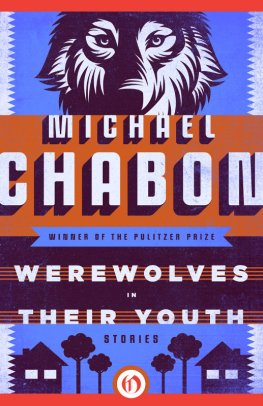
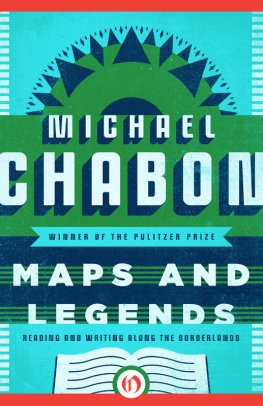
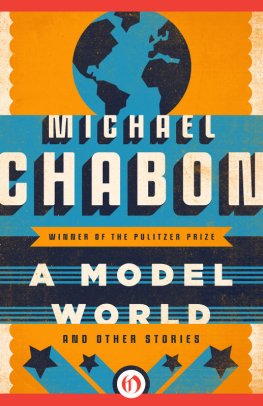





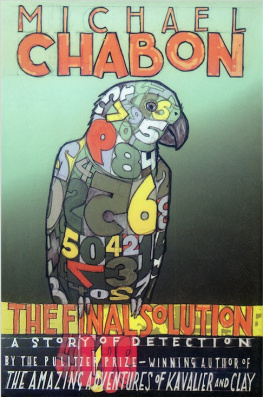
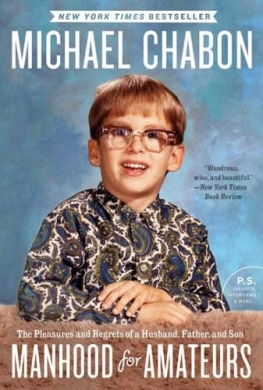
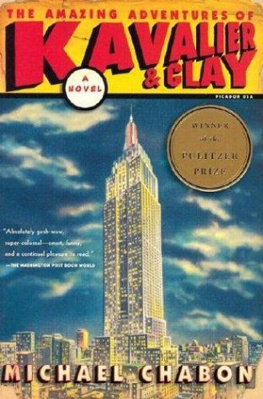
 TM The paper used in this publication meets the minimum requirements of American National Standard for Information Sciences Permanence of Paper for Printed Library Materials, ANSI/NISO Z39.48-1992.
TM The paper used in this publication meets the minimum requirements of American National Standard for Information Sciences Permanence of Paper for Printed Library Materials, ANSI/NISO Z39.48-1992.